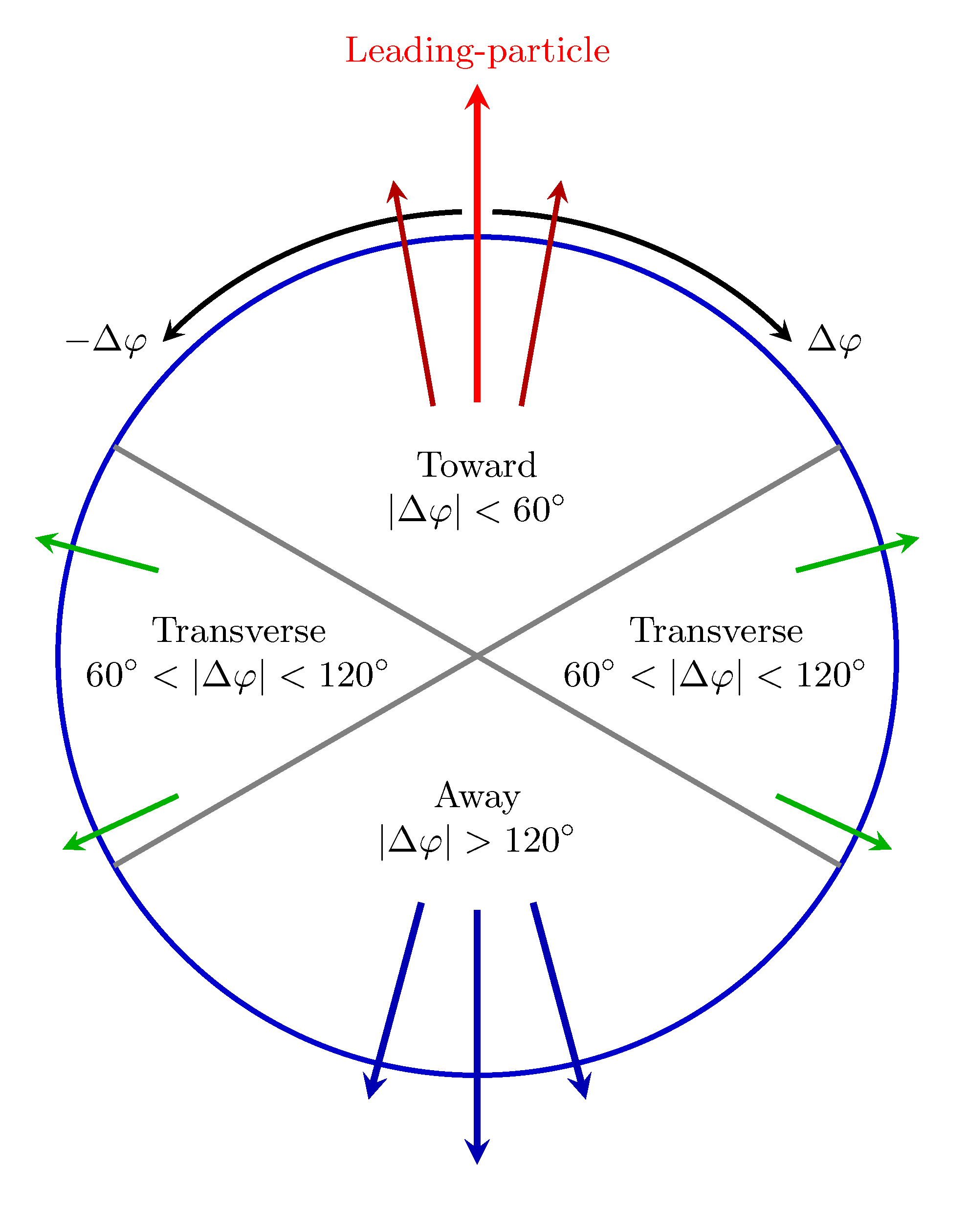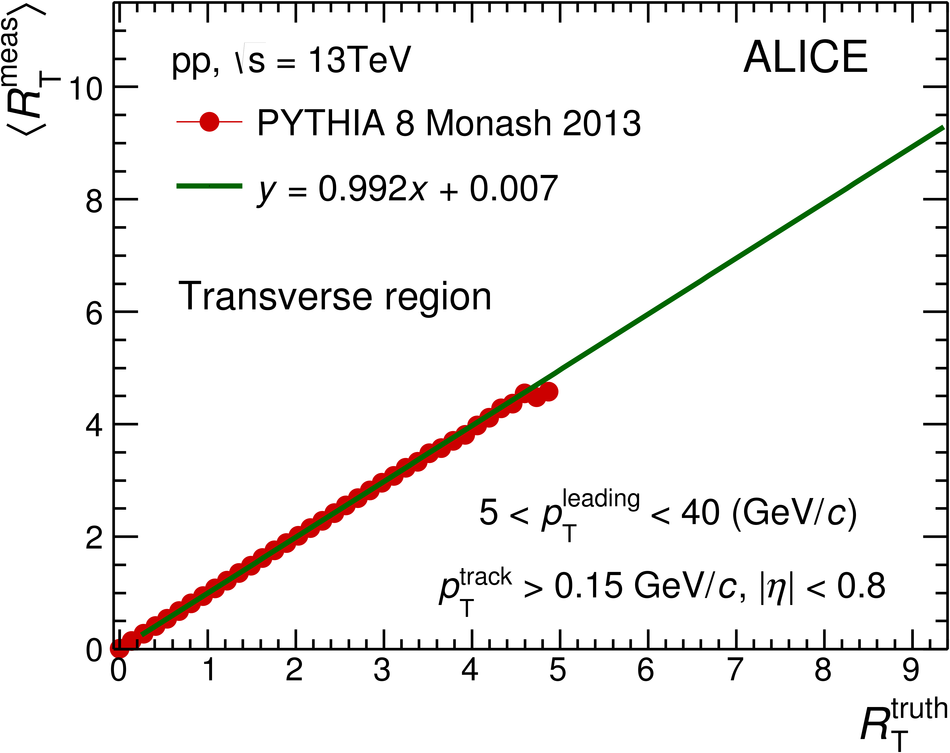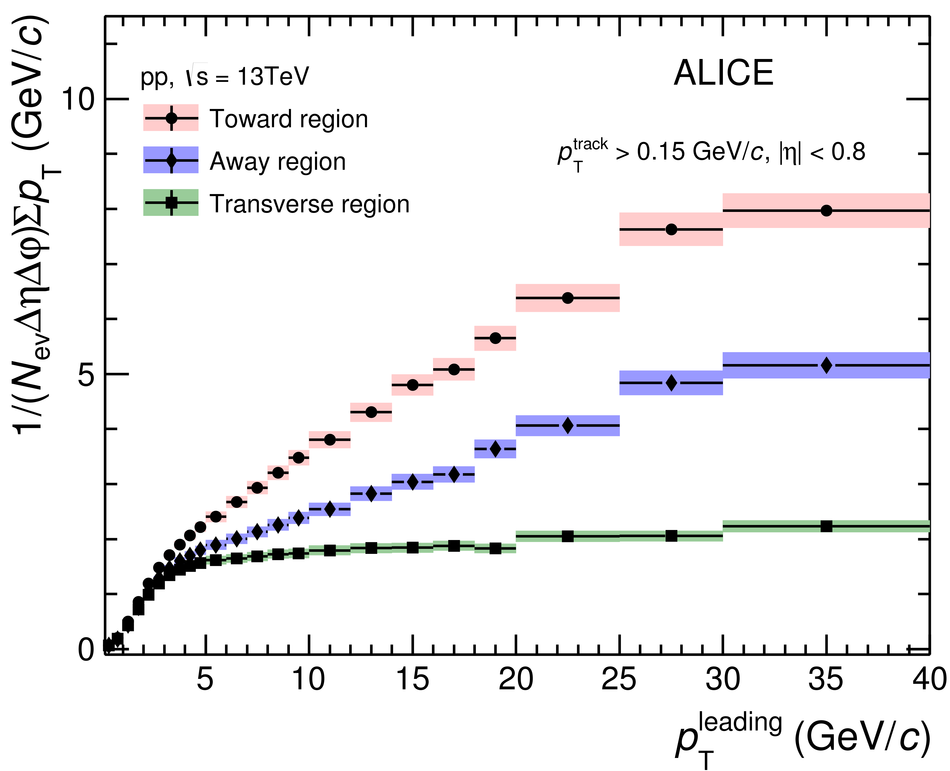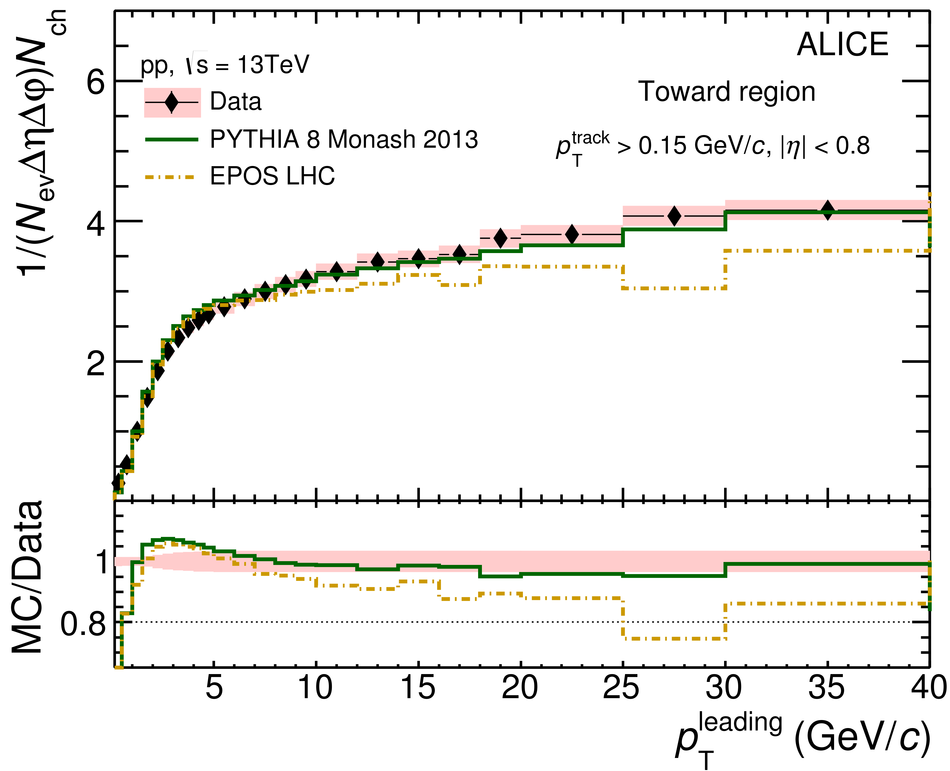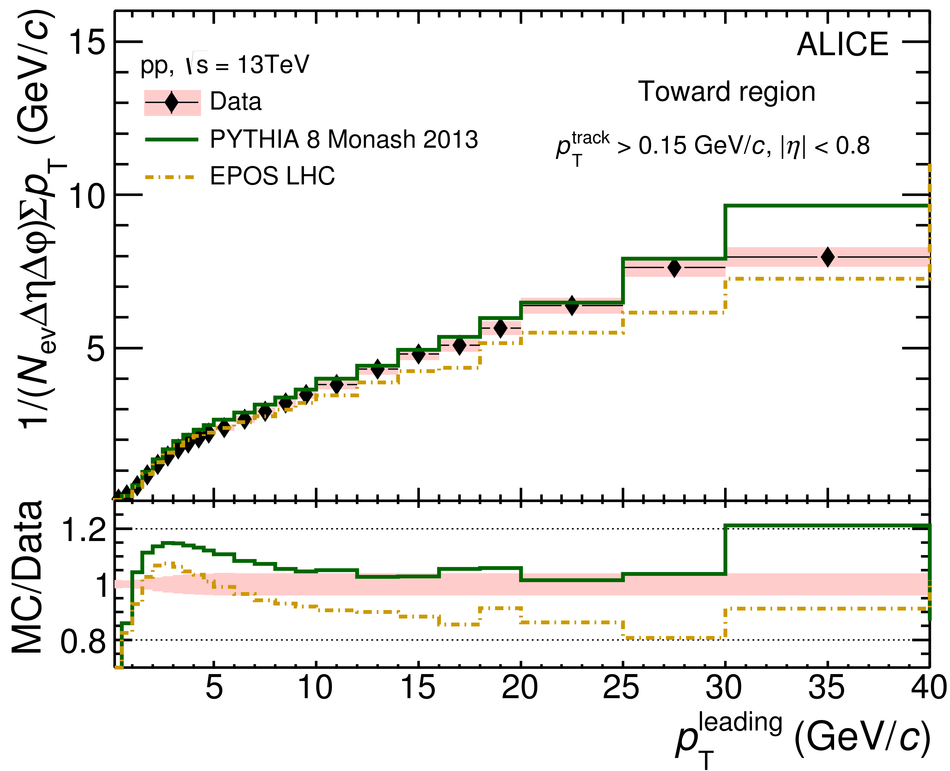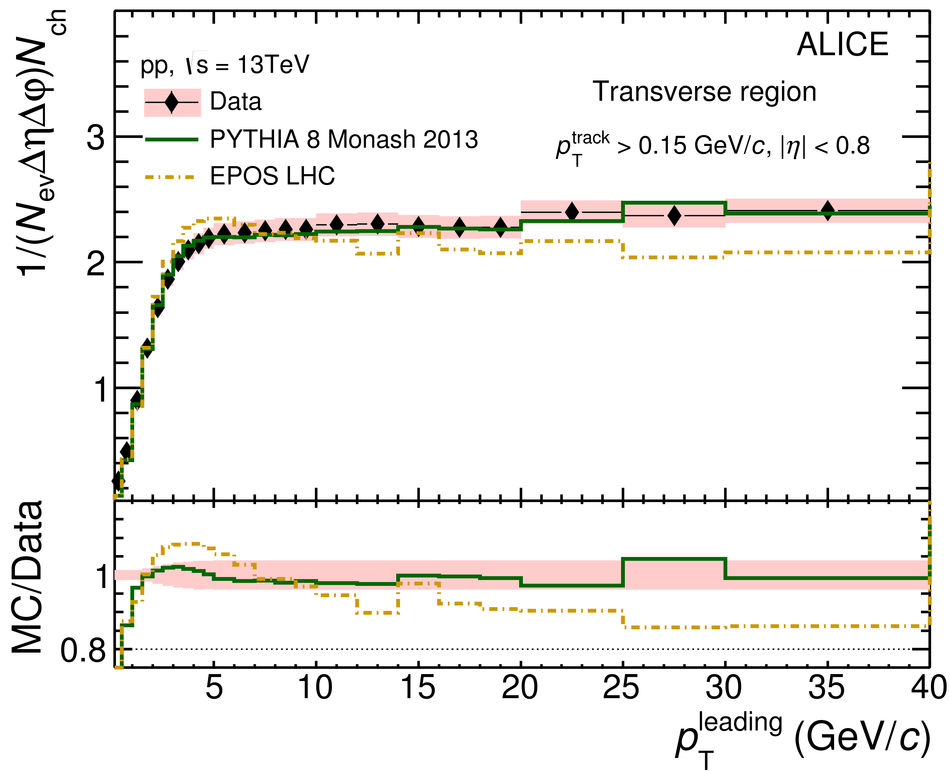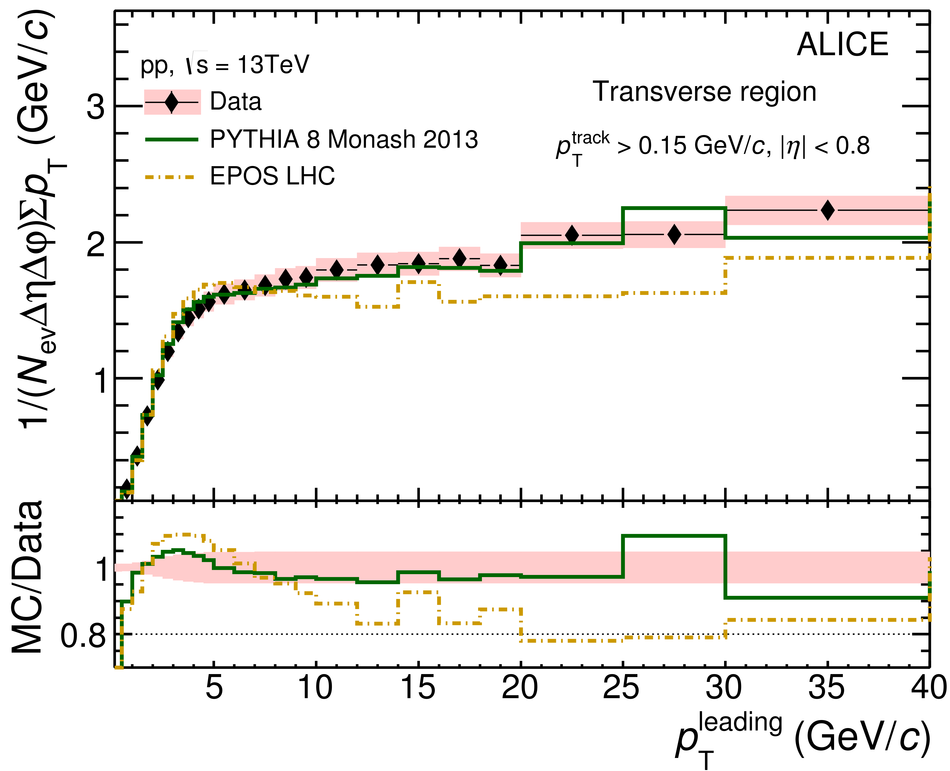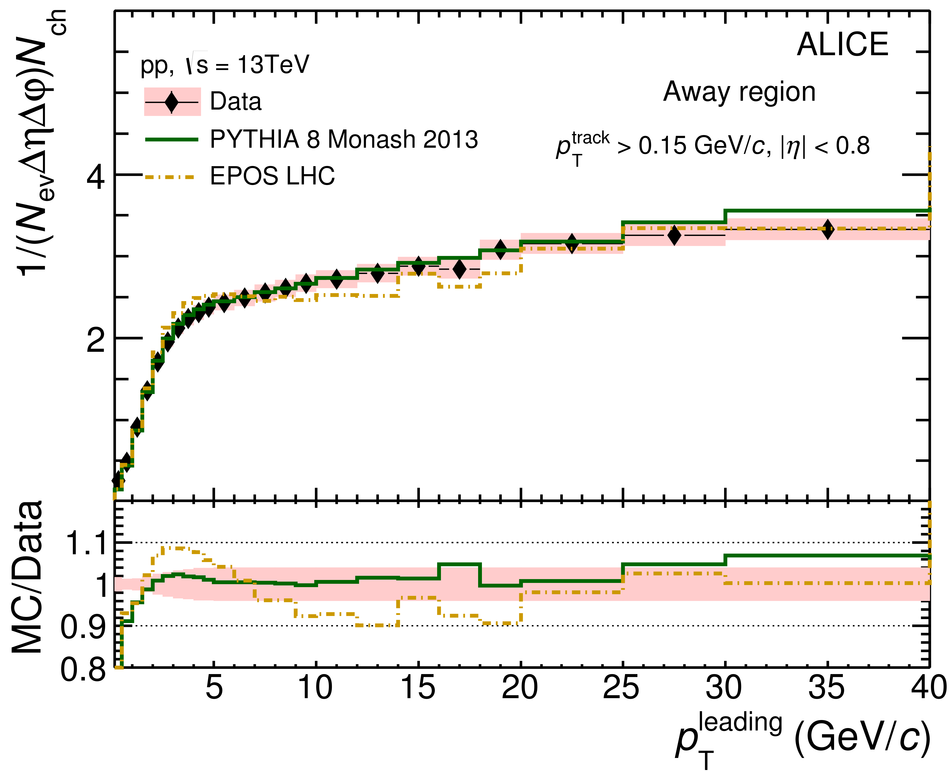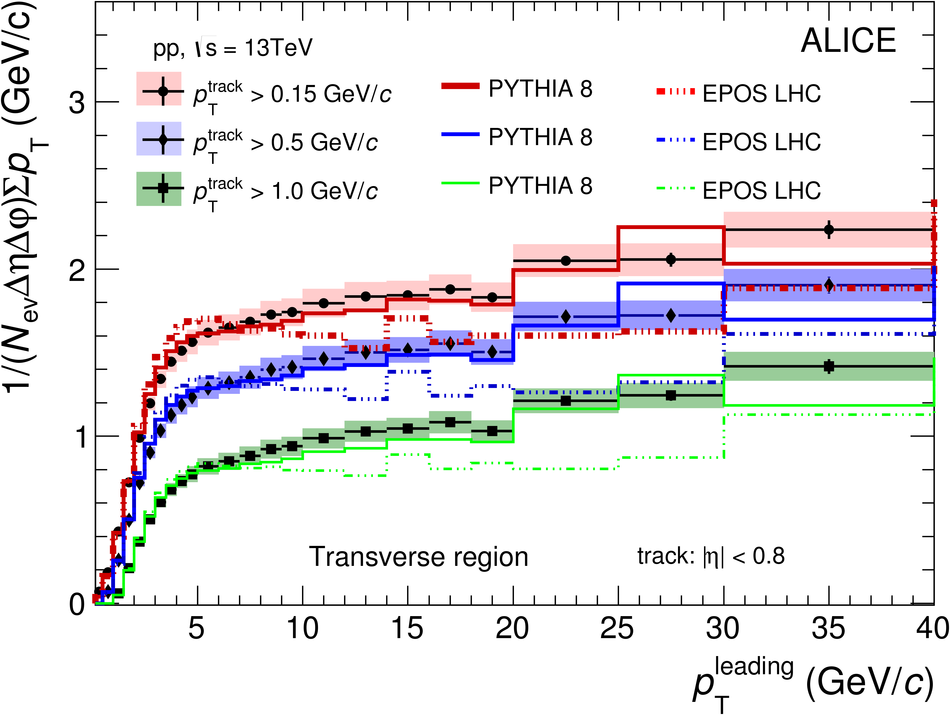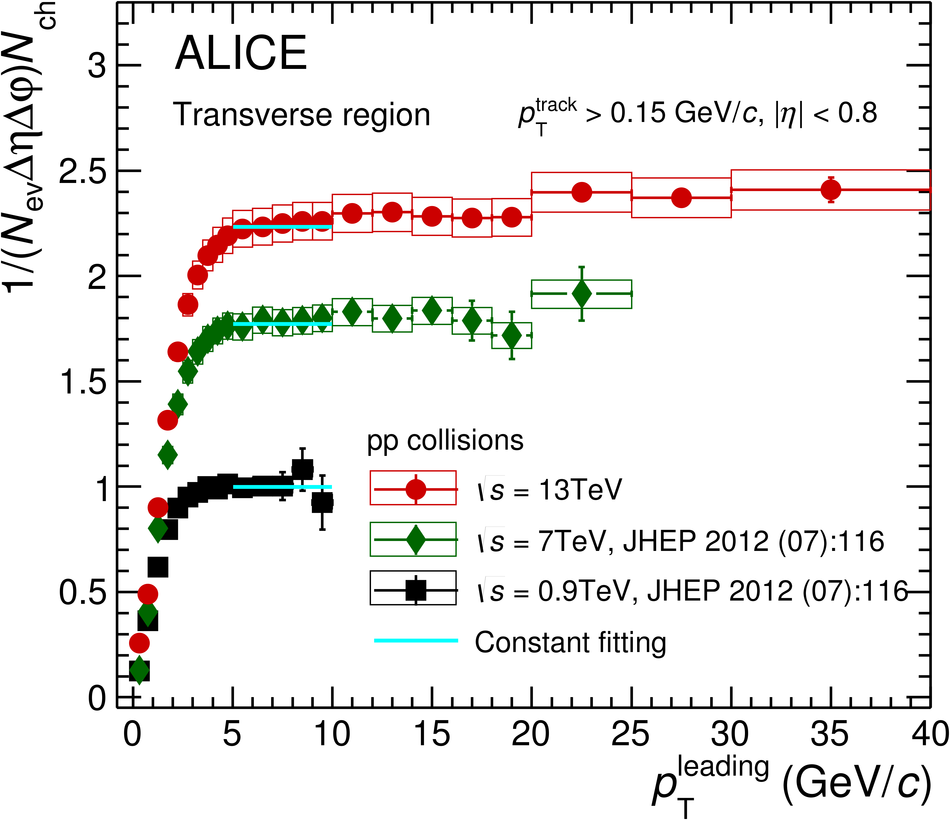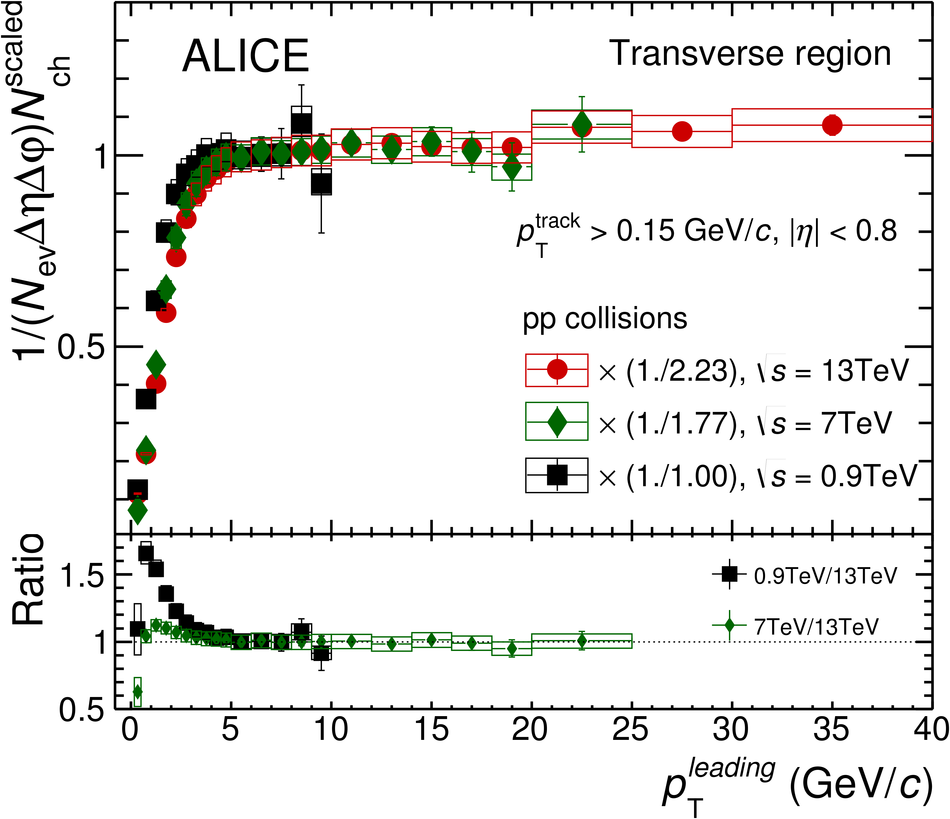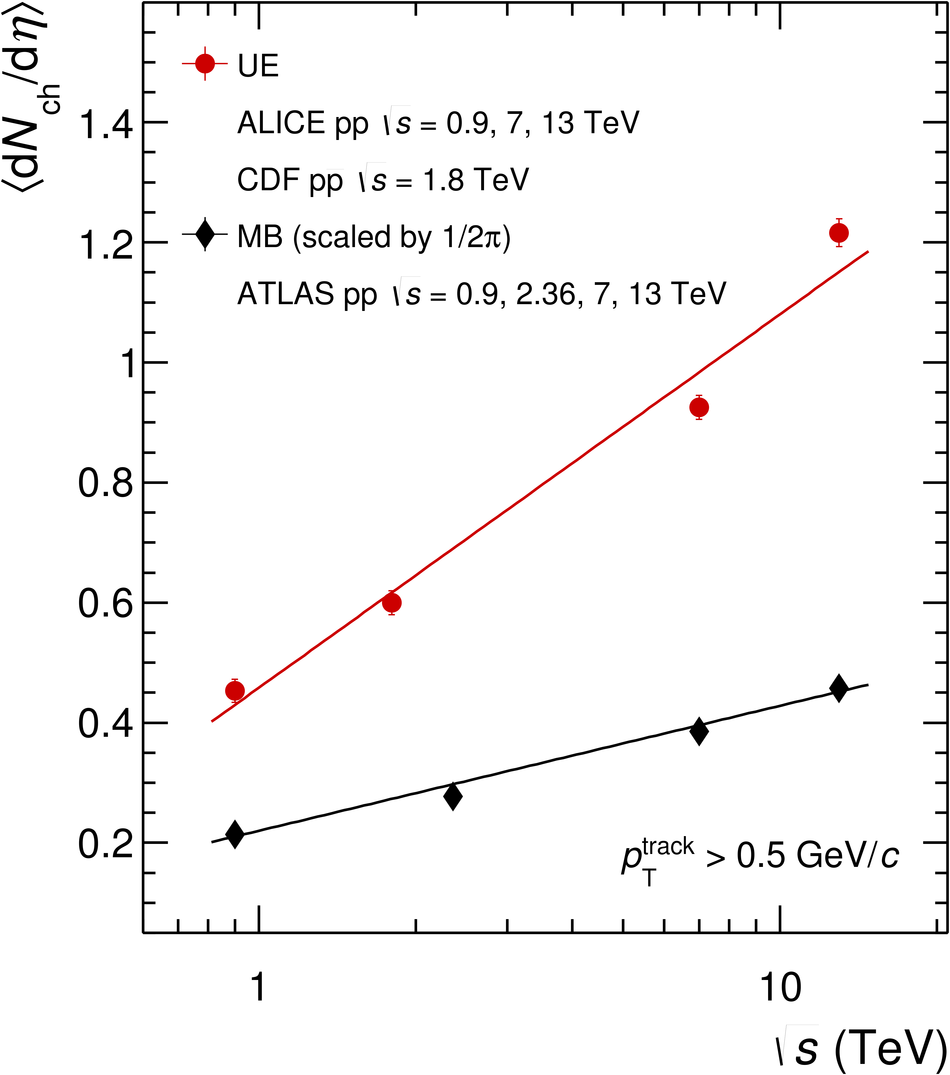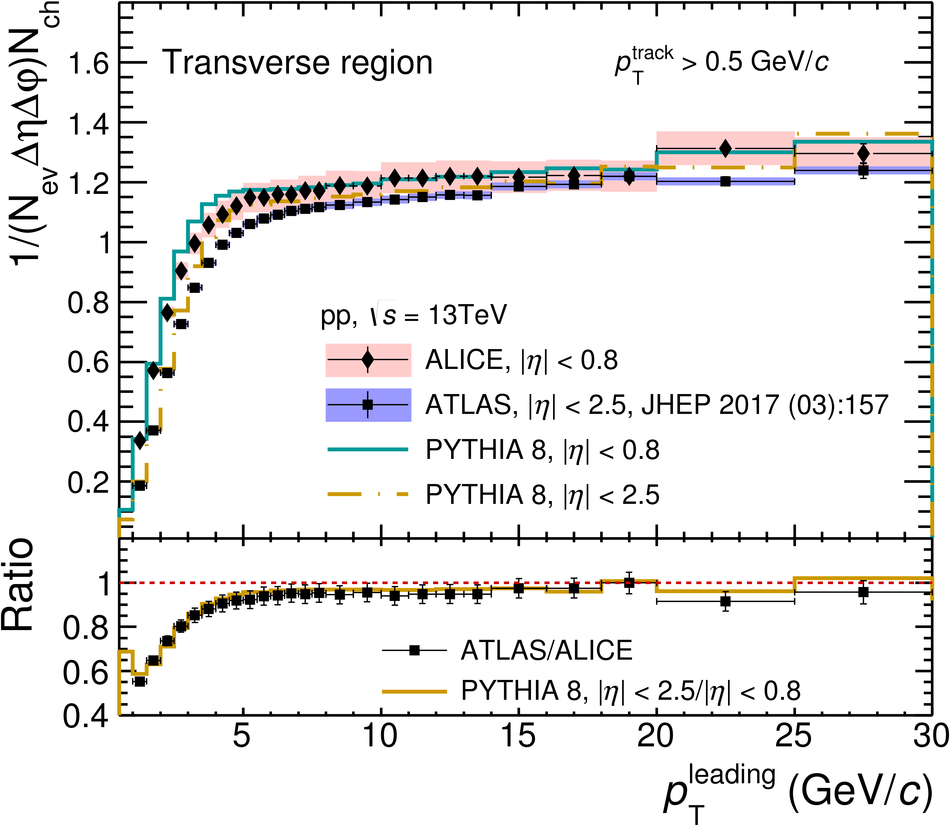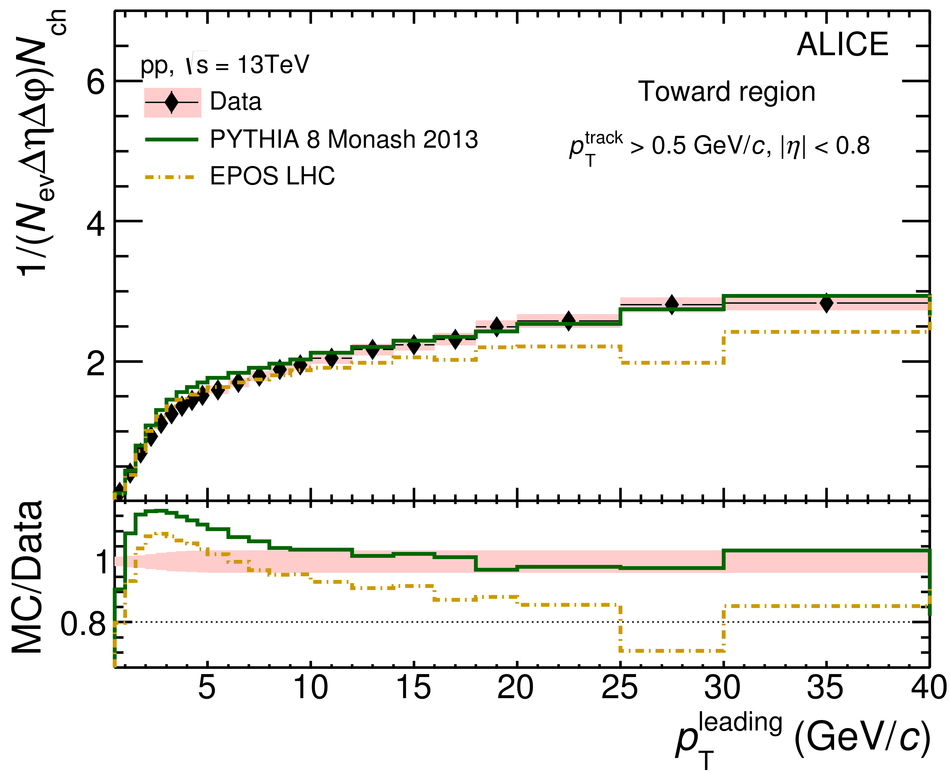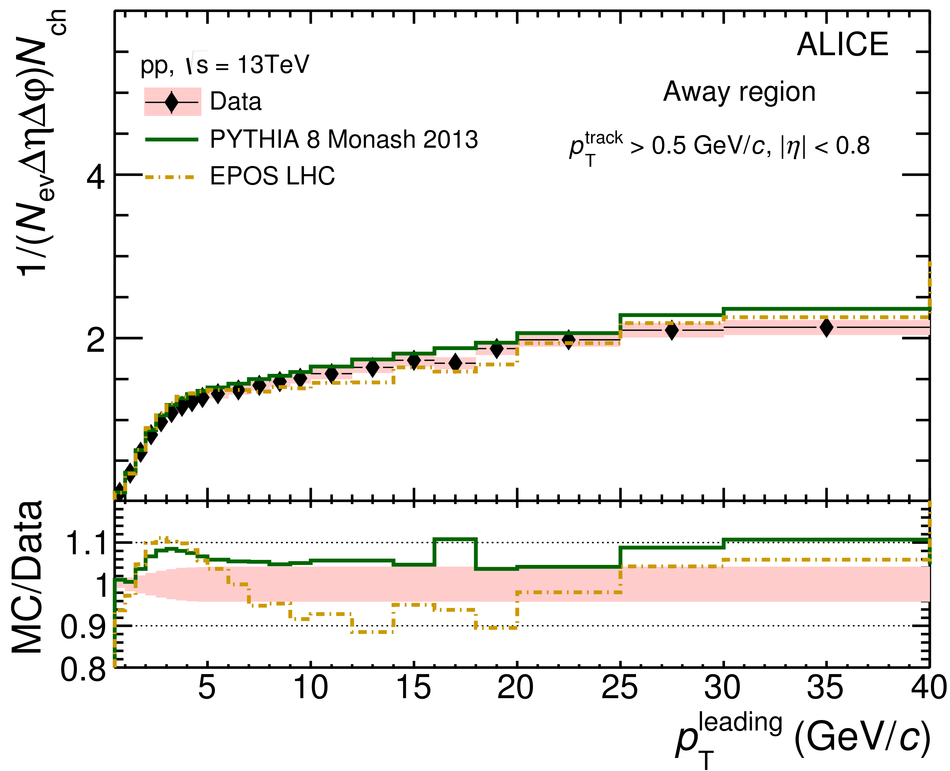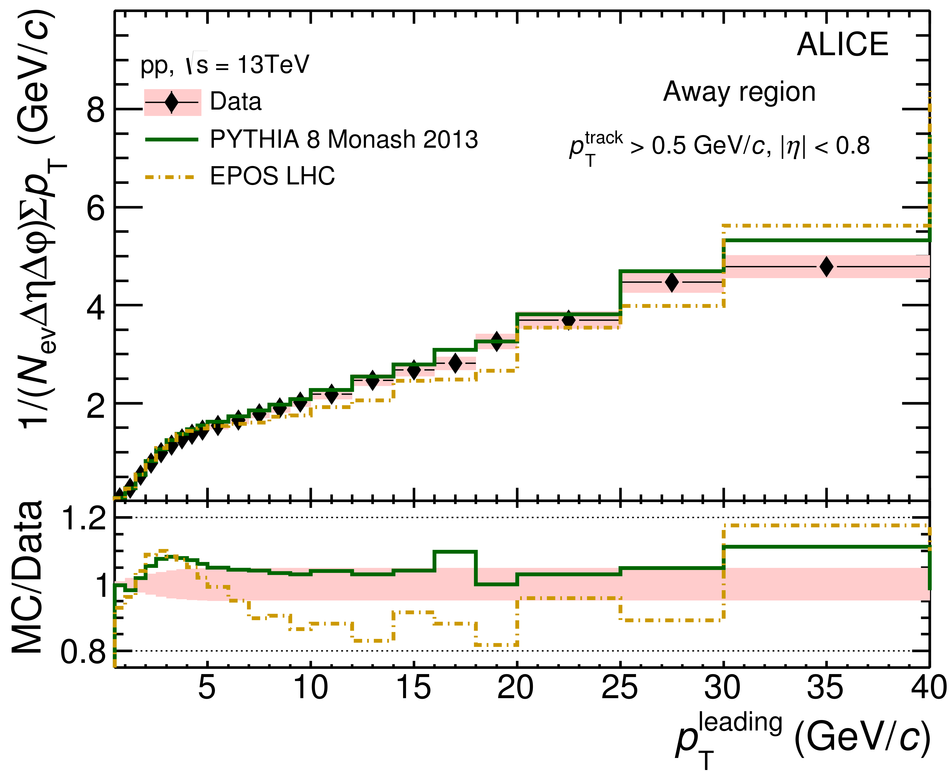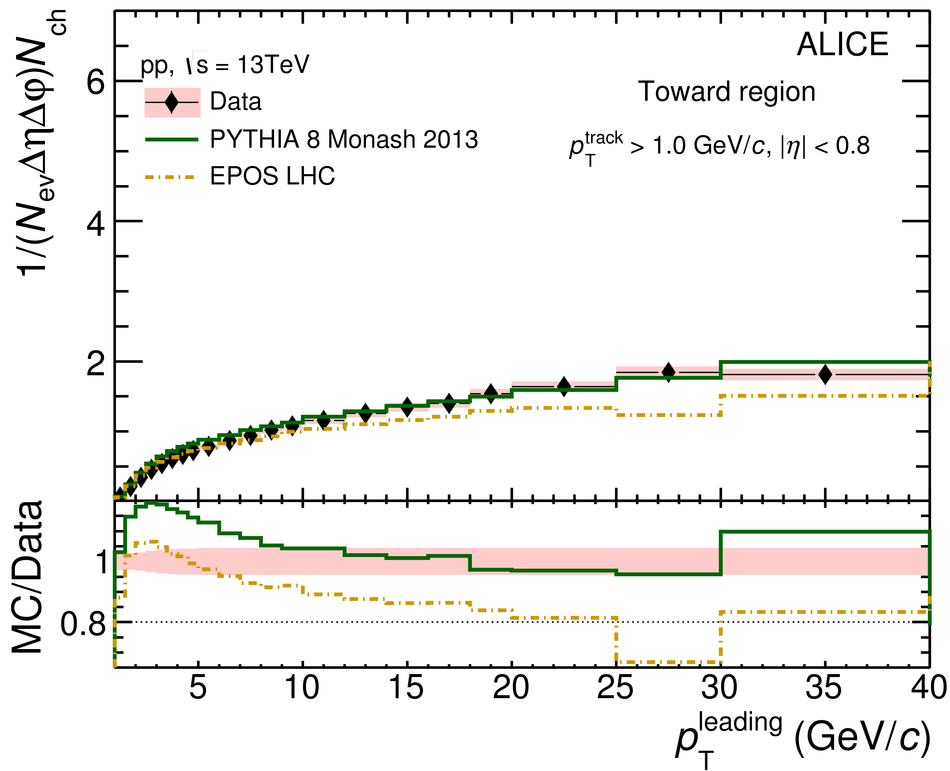This article reports measurements characterizing the Underlying Event (UE) associated with hard scatterings at midrapidity in pp collisions at $\sqrt{s}=13$ TeV. The hard scatterings are identified by the leading particle, the charged particle with the highest transverse momentum ($p_{\rm T}^{\rm leading}$) in the event. Charged-particle number and summed transverse-momentum densities are measured in different azimuthal regions defined with respect to the leading particle direction: Toward, Transverse, and Away. The Toward and Away regions contain the fragmentation products of the hard scatterings in addition to the UE contribution, whereas particles in the Transverse region are expected to originate predominantly from the UE. The study is performed as a function of $p_{\rm T}^{\rm leading}$ with three different $p_{\rm T}$ thresholds for the associated particles, $p_{\rm T}^{\rm min} >$ 0.15, 0.5, and 1.0 GeV/$c$. The charged-particle density in the Transverse region rises steeply for low values of $p_{\rm T}^{\rm leading}$ and reaches a plateau. The results confirm the trend that the charged-particle density in the Transverse region shows a stronger increase with $\sqrt{s}$ than the inclusive charged-particle density at midrapidity. The UE activity is increased by approximately 20% when going from 7 to 13 TeV. The plateau in the Transverse region ($5 <~ p_{\rm T}^{\rm leading} <~ ~ 40$ GeV/$c$ ) is further characterized by the probability distribution of its charged-particle multiplicity normalized to its average value (relative transverse activity, $R_{T}$) and the mean transverse momentum as a function of $R_{T}$. Experimental results are compared to model calculations using PYTHIA 8 and EPOS LHC. The overall agreement between models and data is within 30%. These measurements provide new insights on the interplay between hard scatterings and the associated UE in pp collisions.
J. High Energ. Phys. 2020, 192 (2020)
HEP Data
e-Print: arXiv:1910.14400 | PDF | inSPIRE
CERN-EP-2019-235

